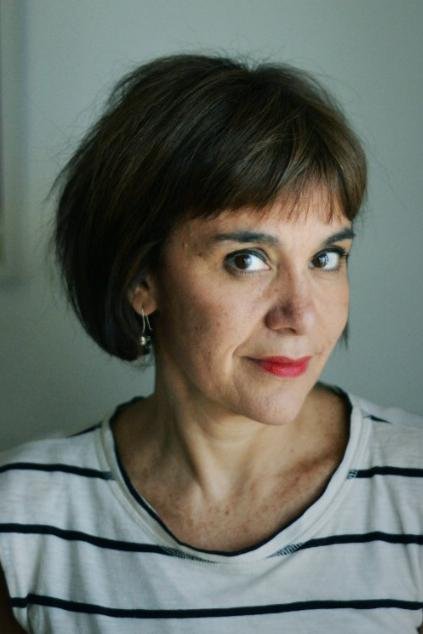Florencia Suarez Guerrini

Conference Report. November 2023
The 2023 Annual Conference of the International Committee for Museums and Collections of Modern Art (CIMAM) took place from 9-11 November at the Museo de Arte Moderno in the City of Buenos Aires, Argentina. Titled “The Co-Creative Museum: Social Agency, Ethics, Social Agency, Ethics, and Heritage”, and with a focus on the social role of museums, professionals from all over the world tackled the question of what a co-creative museum is. What strategies and practices can museums advance to promote integration and joint collaborations with the different communities in their territory? These questions were raised by the speakers on each day of the conference, focusing on three themes: the social responsibility of these institutions, their educational role, and the potential to collect and preserve heritage at the same time as they create new communities.
One of the most stimulating presentations took place on the first day of the conference and was given by Elvira Espejo Ayca, artist, weaver, and director of the National Museum of Ethnography and Folklore (MUSEF) of La Paz, Bolivia.
Espejo began with a critical examination of the relationship most museums maintain with indigenous communities and the cultural heritage these groups produce. In these institutions, the productions of indigenous peoples tend to be viewed as archaeological objects rather than works of art, a perspective that, for Espejo, is rooted in the conceptual difference between the arts and crafts as well as in the discourse that ties aesthetic value to the notion of fine art, the cornerstone of the origins of Western art history. In this same sense, the societies that produce these pieces are treated as passive agents, objects to be studied rather than subjects capable of being incorporated into museographic narratives as co-creative agents.
Espejo’s concept, which she implements at the Museum of Ethnography, resists considering objects produced by indigenous communities from a formalist aesthetic perspective, that criteria of normative beauty that govern modern Western culture. Instead, she proposes something much greater than a museographic approach or a cultural theory; it is, as Espejo asserts, a paradigm shift that involves considering the objects produced by indigenous communities as subjects, taking into account the worldview of the communities where these productions are meaningful, as well as their material and symbolic values. In these traditions, there is no separation between arts and crafts, nature and culture, rationality and sensibility, and subject and object. The worldview is integrated and contradicts the constitutive taxonomies of the modern rational logos that underlie the colonial system. It considers human productions (textiles, ceramics, metals) in coexistence with the landscape and living beings, flora and fauna, in an interconnected network of the utmost care. Espejo calls it yanak uywaña, or “mutual nurturing”. In this paradigm, there is no vertical relationship of power, where objects would be considered the result of the “domestication” of nature by the subjects. Instead, it is an ecosystem in which all beings maintain horizontal, reciprocal relationships of mutual care. In this framework, instead of referring to Patrimonio [collection], which, like the term “domestication” has a patriarchal connotation, she prefers to speak of “cultural heritage”.
This is a distinct conception of art and cultural assets and requires museums to undergo a shift in their role as knowledge producers as well as to carry out collaborative efforts with communities. In this sense, the National Museum of Ethnography has implemented strategies to engage and work together with different communities on projects such as creating a portable, mobile museum and developing audiovisual content in animated formats aimed at children, featuring the legends of the indigenous peoples and recovering the regional oralitura (orality) and artistic styles.
Espejo presents a new epistemology through which art is considered in its relationship with society and an ecosystem that comprises all of the phases of transformation of the operational chain of cultural assets, from the raw materials to the diversity of knowledge that leads to actions on those materials.
CIMAM 2023 underscored the importance of revising epistemological proposals when proposing museum policies and practices that involve interactions with diverse communities. As for the social role of the museum, the conference provided an opportunity to learn about the situated experiences of different museums of the world, with extensive reflections, creative responses, and an expansive view of cultural diversity. Each presentation revealed the interest that institutions currently have in generating strategies for effective interactions with communities. It is an objective that implies a rethinking of the essentialist view of museum objects, of considering them, above all, as materials produced in community life, in a pluralist sense. It is a question that entails a constant revision of the ethical and pedagogical evaluations that make up professional practice.
Bio
My academic background is in History of Visual Arts at the Faculty of Arts of the UNLP. I currently teach History of Modern and Contemporary Art History at that institution and at UNA, in the Art Criticism and Curatorship career. I attended several seminars and training courses in museology, contemporary art collection management and exhibition production organized during the nineties and the first decade of 2000 by the Fondo Nacional de las Artes and the Fundación Antorchas.